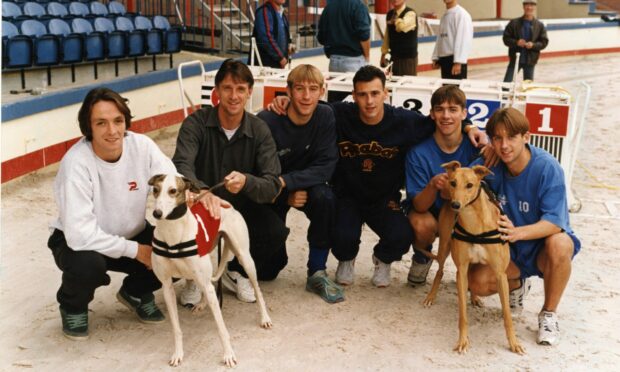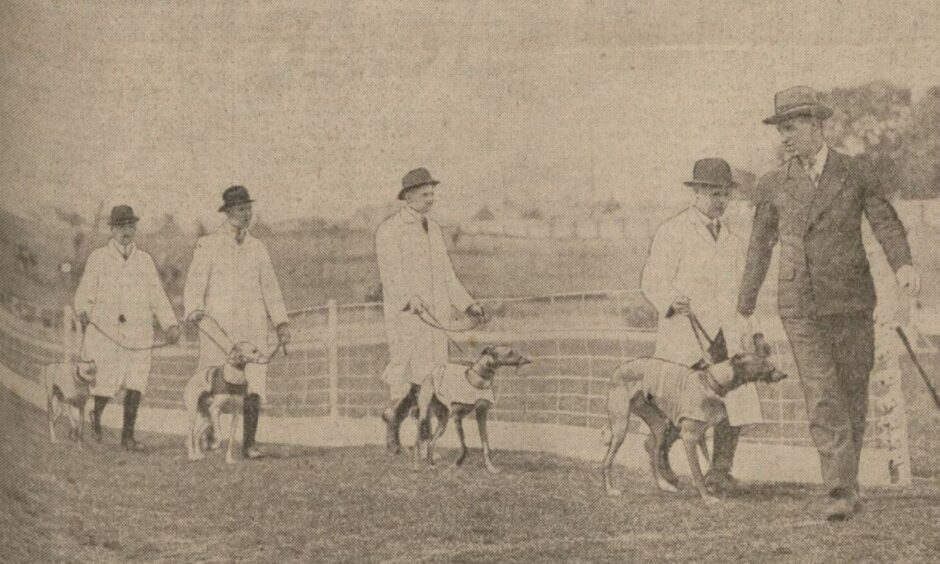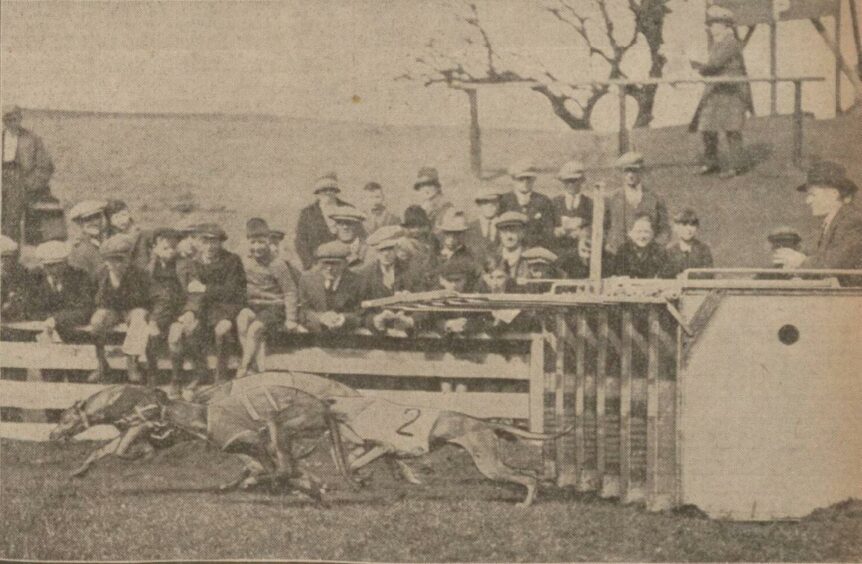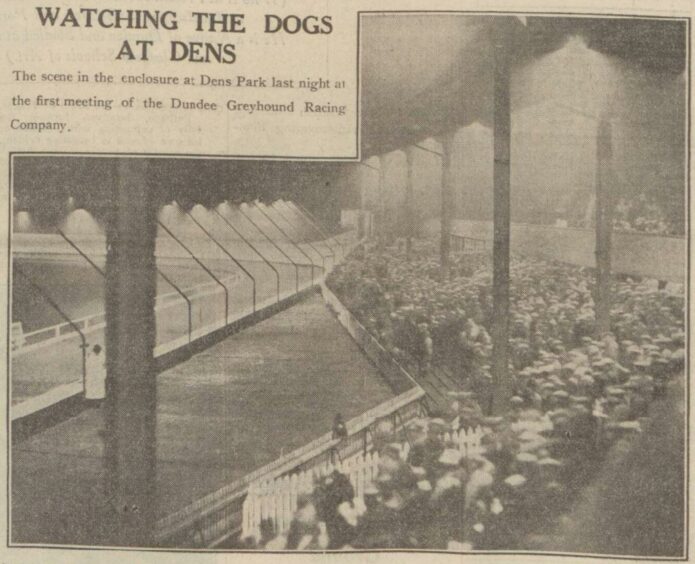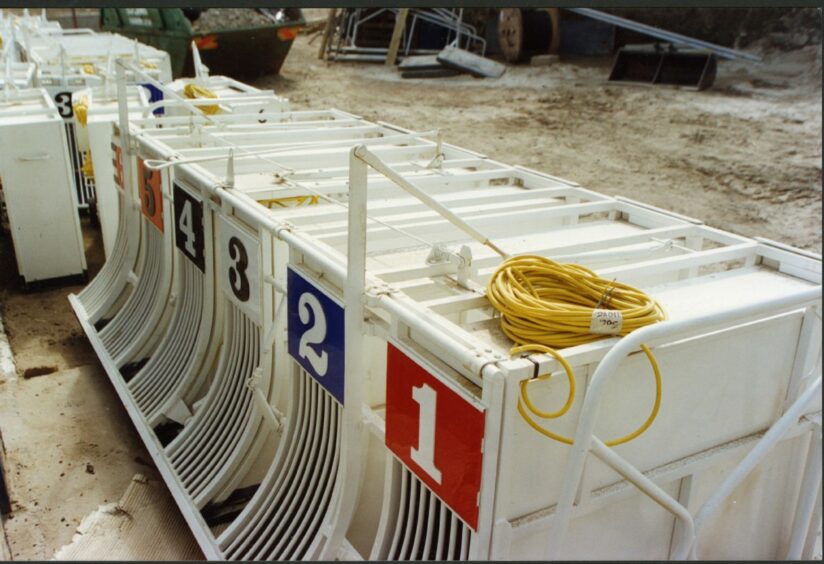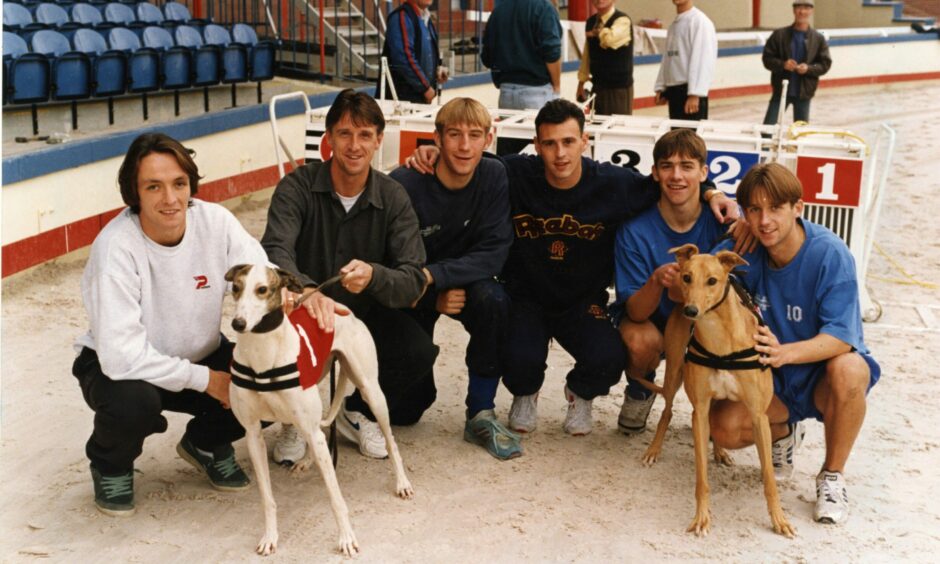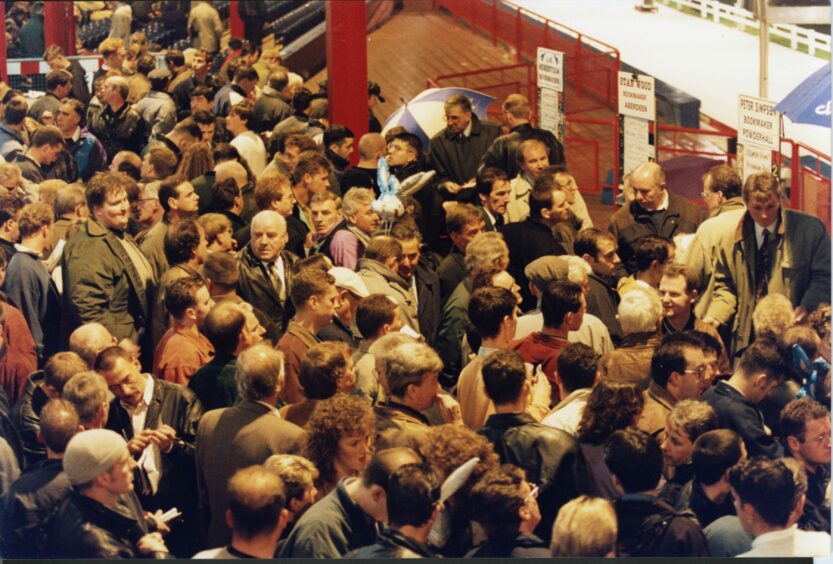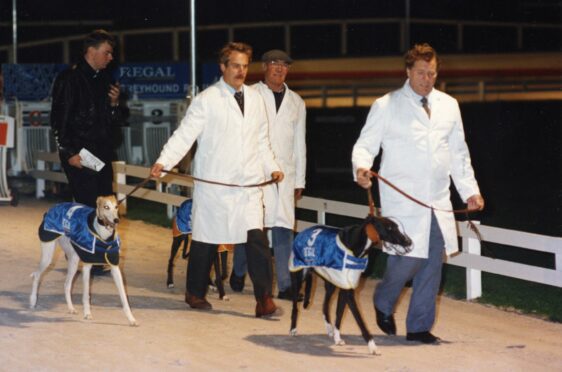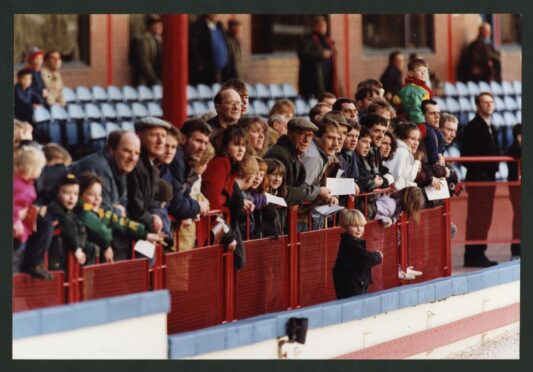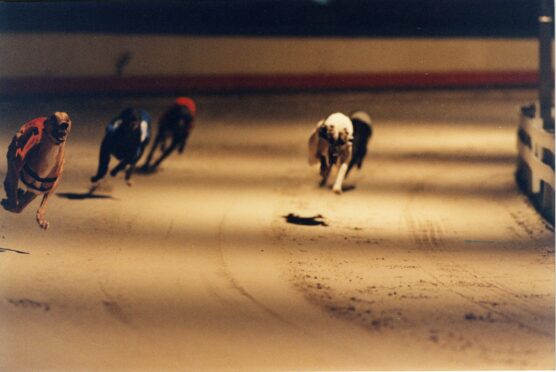Many Dundonians will fondly remember a night at the dogs at Dens during the 1990s.
The tradition of dog racing in Dundee dates back to 1928 when the first racecourse opened at Tannadice Park.
An agreement was reached between a Glasgow promoter and Dundee United to lease Tannadice for five years on the condition there was no damage caused to the pitch – and that dogs didn’t interfere with players.
It became a popular sporting and leisure destination for Dundonians who enjoyed a flutter, but the idea of introducing dog racing in Dundee was condemned by the city’s religious leaders.
Preaching in St Paul’s Cathedral Church, the Very Rev Alan Don said the “so-called sport, imported from America” would attract “betting evil”.
In a sermon, he said the electric hare had arrived in Dundee, and he “knew that there were a great many people besides himself who devoutly wished that the strange animal had remained on the far side of the Atlantic”.
He said: “Quite apart from the misery and hardship it brings on innocent women and children, it undermined character and degraded human beings made in the image of God.”
The Very Rev Don added that “he did not wish to deprive the working man of amusement”, but they could not regard as innocent a form of amusement which depended on gambling to succeed.
And he wasn’t alone. Led by the Reverend DD Smith, the whole congregation of the Ward Road Baptist Church literally took a stand against gambling in 1928 taking their protest right to the top.
Not to God, but to Westminster.
The congregation stood up and declared during a special address against betting in Dundee: “We, the members of Ward Road Baptist Church, Dundee, urge upon the Home Secretary to take immediate steps to introduce necessary legislation making betting on greyhound racing illegal.”
The protests were futile and the racecourse opened on May 19 that year, but it was a slow start with a crowd of just a couple of hundred punters on the first night.
The grand opening featured a champion class programme of seven races, with Violent Hawk, a favourite at 2-1, the prized pooch to win the inaugural race.
Numbers picked up the following week when more than 1,000 people turned out to watch Strange Daisy, Violent Hawk, Little Bertie’s Boy, Oliver Twist, Julia’s Darling and Fly Fanny triumph over their canine rivals.
The popularity of dog racing didn’t wane, and as the Tannadice lease approached its expiry, the decision was made to shift the meetings along the road to Dens Park in late 1932.
As part of the expanding operation, kennels for 200 dogs and a cookhouse for their meals were built at Strathmartine Road.
Meanwhile, punters were promised floodlighting, shelter from the weather in a “commodious, glass-fronted grandstand” and refreshments during races.
More than 4,000 Dundonians turned out for the thrilling first night of the greyhounds at Dens on November 9.
And not just the preserve of the city’s menfolk, it was also reported that there was “quite a good representation of the fair sex” in attendance too.
With the “snap traps open, and four or five palpitating bundles of energy hurtling after their prey”, there was no shortage of action in each race.
The dogs at Dens continued to attract crowds of thousands, but the men behind Dundee Greyhound Racing Company found themselves sued by Dundee FC in 1936 for failing to pay the previous year’s rent.
The matter was resolved, and greyhound racing continued in Dundee, reaching its peak in the post-war years.
It was a time when the number of spectators was only topped by turnouts at football.
But as the decades wore on, dog racing fell out of fashion and the Dundee race meetings closed in 1982.
There was a short-lived renaissance in the mid-1990s when it was reported in January 1994 that the Dark Blues hoped to re-establish greyhound racing at Dens Park to boost the club’s coffers.
It formed part of a planning application from the football club to build a new £5 million 8,200-capacity stand.
The grandstand didn’t materialise, but permission was granted for dog racing to return to Dens.
Hundreds turned out for the opening night on October 21, with the first of eight races commencing at 7.40pm and running until 10pm.
The operation continued before changing hands in May 1996 when it was bought over a by a consortium of Dundee businessmen.
Latterly operated by Dundee Leisure Limited, it was relaunched in June as Dundee Greyhound Racing with Jim Connor, Alan Johnson, Jim Robertson, Malcolm Reid and David Young as directors.
Mr Connor told the Courier: “We feel very strongly that it is a first-class facility, having probably the best greyhound facilities in the country, and we aim to make this something that Dundee folk can be proud of.”
But by November, rumours were circling that the whole enterprise had gone to the dogs, a claim hastily quashed by the directors.
Greyhound racing’s prestigious knockout Super Track Tournament was hosted at Dens Park later that month.
Dundee were the 500-1 outsiders against Hove in the semi-final.
The visiting competitors took 11 dogs up north to train ahead of the clash, but the big-ticket meeting still didn’t silence speculation around the future of racing at Dens.
Within weeks, the city council suspended the entertainments licence at Dens, although races did continue for a few weeks.
But time was finally called on greyhound racing in Dundee on December 11 1996 when operators said meetings were suspended until further notice with “little or no prospect of resumption”.
It was hoped the enterprise would bring much-needed revenue to the football club, but it had become a drain on resources.
One of the directors Mr Reid said it had cost £800,000 to get the operation off the ground and they had been operating at a loss ever since.
Despite 1996 marking the end of dog racing in Dundee, the hosting of the national tournament that year is still considered the sport’s finest hour at Dens.
If you enjoyed this, you might like:
